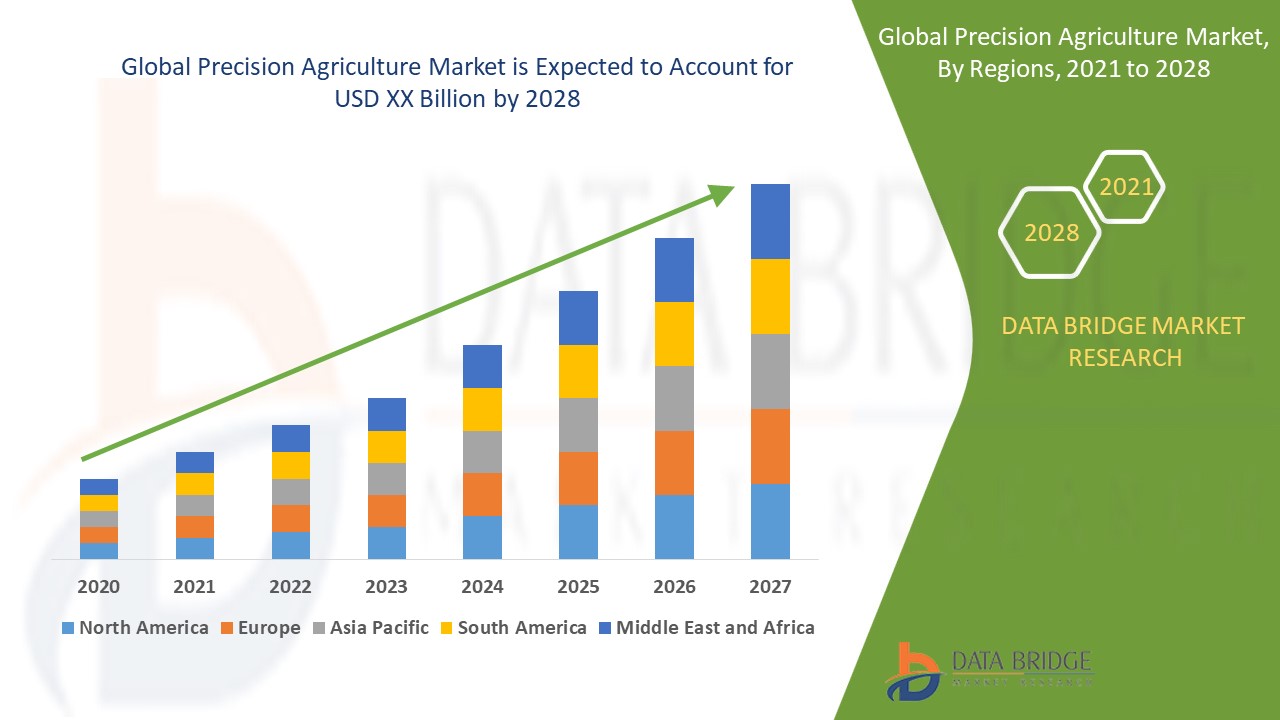Introduction
Precision agriculture, also known as smart farming, is a cutting-edge farming practice that leverages technology to enhance agricultural productivity, efficiency, and sustainability. By utilizing GPS systems, sensors, drones, data analytics, and artificial intelligence (AI), precision agriculture enables farmers to monitor and manage crops and livestock with greater accuracy. The goal is to optimize inputs such as water, fertilizers, and pesticides to maximize yield, reduce waste, and minimize environmental impact. This article delves into the evolution of precision agriculture, key market trends, factors driving its growth, the scope and size of the market, and a country-level analysis.
The Evolution of Precision Agriculture
The origins of precision agriculture can be traced back to the 1980s when GPS technology first became widely available for civilian use. Early adopters of precision farming used GPS for field mapping and yield monitoring, which allowed for more precise management of agricultural inputs. These early efforts laid the groundwork for the integration of more advanced technologies, such as variable-rate technology (VRT), soil sampling, and remote sensing.
In the 1990s, advancements in data collection and satellite imagery further propelled precision agriculture. Farmers began using data-driven approaches to manage fields based on variability in soil conditions, moisture levels, and crop health. As technology evolved, precision farming techniques expanded to include automated machinery, drones, and artificial intelligence to further enhance efficiency and productivity.
Today, precision agriculture is at the forefront of modern farming, with AI, machine learning, and big data analytics playing an increasingly important role. These technologies allow for real-time monitoring and decision-making, empowering farmers to optimize their resources, reduce labor costs, and improve overall farm management. The evolution of precision agriculture continues as innovations such as robotics, autonomous machinery, and blockchain technology become more integrated into farming operations.
Market Trends and Factors Driving Growth
Several key trends are shaping the growth of the precision agriculture market. One of the most significant trends is the increasing adoption of AI and machine learning in farming operations. AI algorithms can analyze large datasets collected from sensors, drones, and satellite imagery to provide actionable insights. These insights help farmers make informed decisions about irrigation, fertilization, and pest control, ultimately improving crop yield and reducing resource consumption.
Another important trend is the growing use of drones and aerial imagery in precision farming. Drones equipped with multispectral sensors can capture detailed images of crops and soil conditions, allowing farmers to detect issues such as nutrient deficiencies, pest infestations, and water stress. Aerial imagery provides a bird’s-eye view of the entire farm, enabling more precise monitoring and management.
The rising focus on sustainability and environmental conservation is also driving the adoption of precision agriculture. As concerns about climate change and resource scarcity grow, farmers are under increasing pressure to adopt practices that minimize environmental impact. Precision agriculture allows for more efficient use of water, fertilizers, and pesticides, reducing greenhouse gas emissions and preventing soil degradation. This focus on sustainability aligns with global initiatives to promote sustainable farming practices and ensure food security.
Government initiatives and financial incentives are also playing a key role in the growth of precision agriculture. Governments in many countries are encouraging the adoption of smart farming technologies through subsidies, grants, and research funding. For example, the European Union’s Common Agricultural Policy (CAP) includes provisions to support precision agriculture, while the U.S. Department of Agriculture (USDA) offers financial assistance to farmers implementing precision technologies.
The increasing availability and affordability of advanced farming technologies, such as IoT devices, sensors, and drones, is another factor driving the growth of precision agriculture. As these technologies become more accessible, even small and medium-sized farms are able to adopt precision farming practices. Additionally, the rise of cloud computing and mobile applications has made it easier for farmers to collect, store, and analyze data from their fields.
Market Scope and Market Size
The precision agriculture market is vast and encompasses a wide range of technologies and solutions designed to optimize farming operations. Key components of the market include hardware (e.g., sensors, GPS systems, drones), software (e.g., farm management platforms, data analytics tools), and services (e.g., consultancy, technical support, training). The market serves various segments, including crop farming, livestock farming, and aquaculture.
As of 2023, the global precision agriculture market was valued at approximately USD 12 billion, with a projected compound annual growth rate (CAGR) of 13% from 2023 to 2030. The market’s rapid growth is being fueled by the increasing adoption of smart farming technologies, the need for higher agricultural productivity, and the growing focus on sustainability. The rise in global food demand, driven by population growth and urbanization, is also contributing to the expansion of the market, as farmers seek more efficient ways to produce food.
The market is segmented by technology, application, and region. By technology, the market includes GPS systems, remote sensing, VRT, drones, and AI-based solutions. GPS and VRT are among the largest segments, as these technologies form the backbone of precision farming operations. Drones and AI-based solutions are experiencing rapid growth, driven by advancements in imaging technologies and data analytics.
In terms of application, crop farming is the largest segment, accounting for a significant share of the precision agriculture market. The demand for precision farming technologies in crop production is being driven by the need to optimize resource use, reduce input costs, and improve crop yield. Livestock farming is another growing segment, as precision technologies are increasingly being used to monitor animal health, feed management, and breeding programs.
Country-Level Analysis
The precision agriculture market is growing worldwide, with North America, Europe, and Asia-Pacific being the leading regions.
North America is the largest market for precision agriculture, driven by the region’s advanced agricultural infrastructure, high adoption of smart farming technologies, and strong government support. The United States is the dominant player in this region, with widespread adoption of GPS, drones, and AI-based solutions among large-scale farmers. The U.S. Department of Agriculture (USDA) has also been actively promoting precision farming through various programs and financial incentives. Canada is another key market in North America, with increasing investment in precision agriculture technologies and research.
Europe is another significant market for precision agriculture, with countries like Germany, France, and the United Kingdom leading the way. The European Union’s commitment to sustainable agriculture, as outlined in the European Green Deal and the Common Agricultural Policy (CAP), is driving the adoption of precision farming technologies in the region. European farmers are increasingly adopting smart farming practices to comply with environmental regulations, reduce greenhouse gas emissions, and improve resource efficiency. The use of drones and AI in farming is particularly growing in Europe, as farmers seek to improve crop monitoring and reduce labor costs.
Asia-Pacific is expected to be the fastest-growing region in the precision agriculture market, driven by rapid advancements in agricultural technologies and increasing government initiatives to promote smart farming. Countries like China, Japan, and Australia are leading the region’s adoption of precision farming, with significant investments in research and development. China’s government has launched several initiatives to modernize its agricultural sector, including the adoption of precision farming techniques to increase productivity and ensure food security. In Japan, the use of robotics and AI in farming is on the rise, as the country seeks to address labor shortages and improve agricultural efficiency.
In Latin America and the Middle East & Africa, the precision agriculture market is also growing, although at a slower pace compared to other regions. In Latin America, countries like Brazil and Argentina are seeing increased adoption of precision farming technologies, driven by the need to optimize crop production and improve resource management. In the Middle East & Africa, the market is being driven by government initiatives to improve food security and agricultural sustainability, particularly in countries with water scarcity and challenging environmental conditions.
Conclusion
The precision agriculture market is poised for continued growth, driven by technological advancements, the increasing demand for sustainable farming practices, and the need to meet rising global food demand. As farmers around the world embrace data-driven solutions to optimize their operations, precision agriculture will play an increasingly important role in shaping the future of farming. With North America, Europe, and Asia-Pacific leading the way, the global precision agriculture market offers significant opportunities for growth and innovation. As the market continues to evolve, precision agriculture will remain at the forefront of efforts to improve productivity, reduce environmental impact, and ensure food security for future generations.
Get More Detail: https://www.databridgemarketresearch.com/reports/global-precision-agriculture-market




